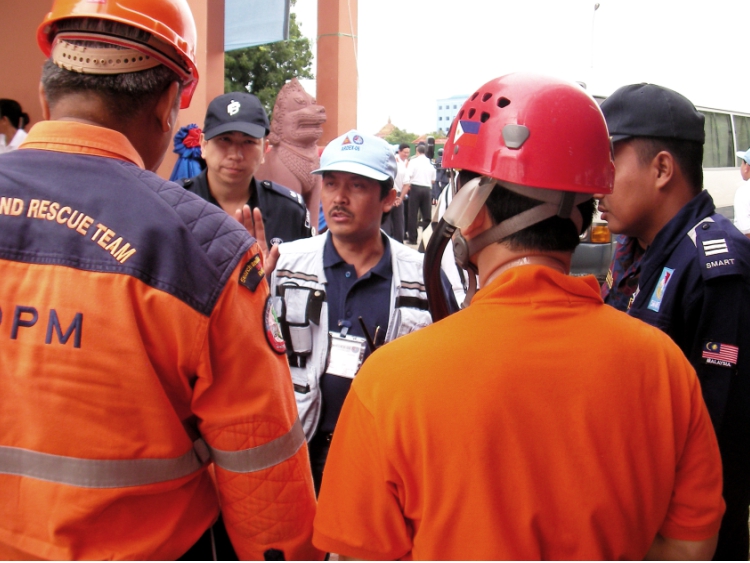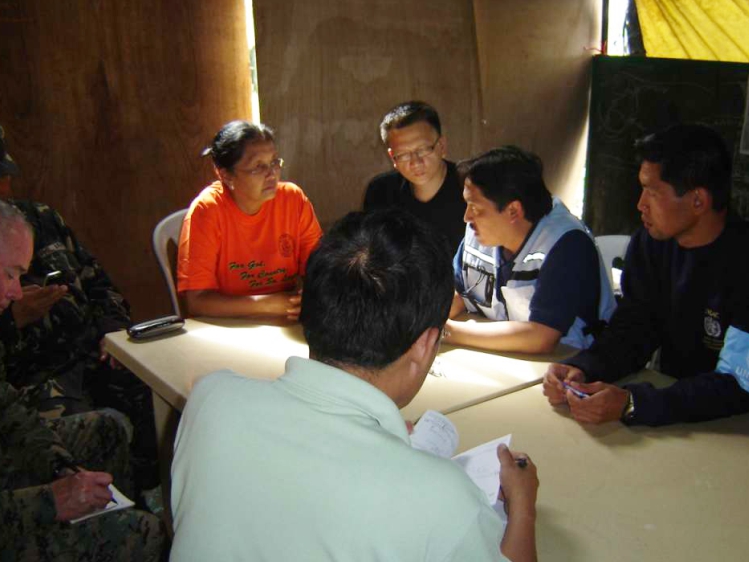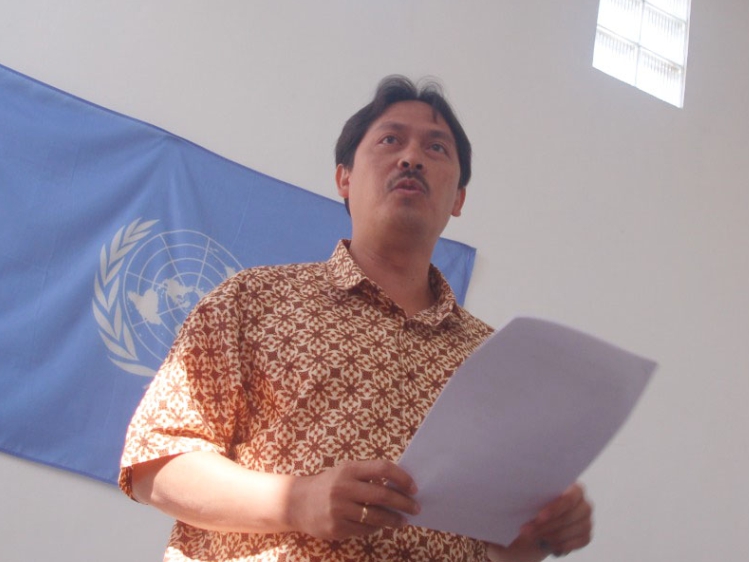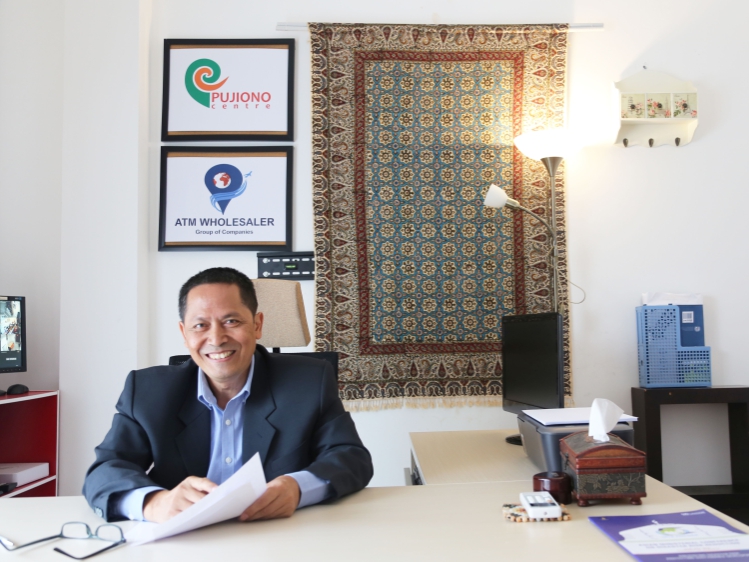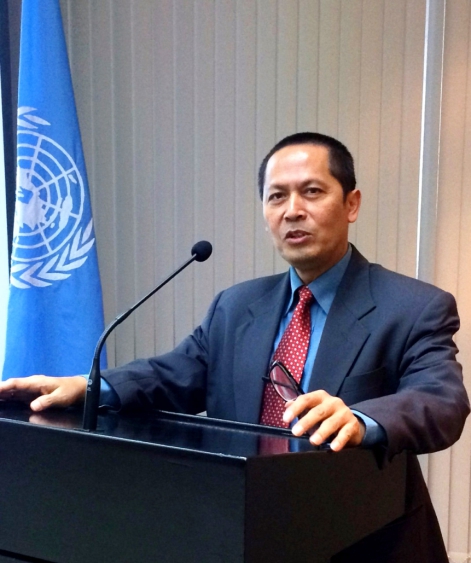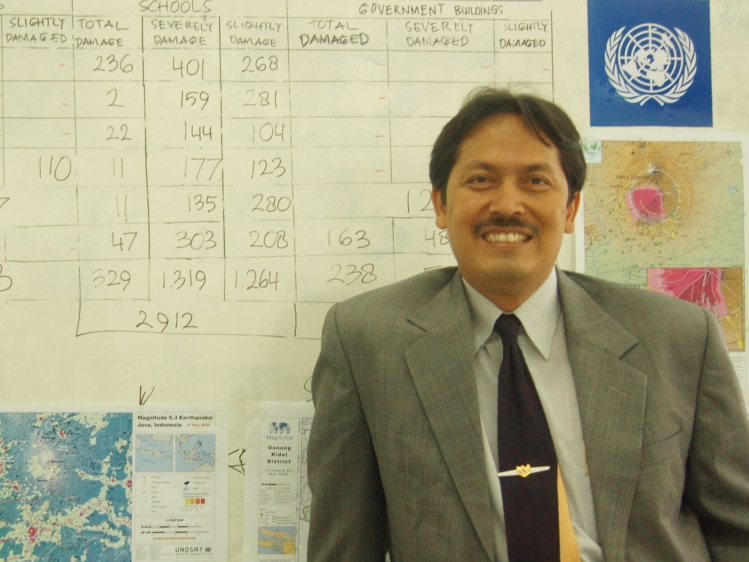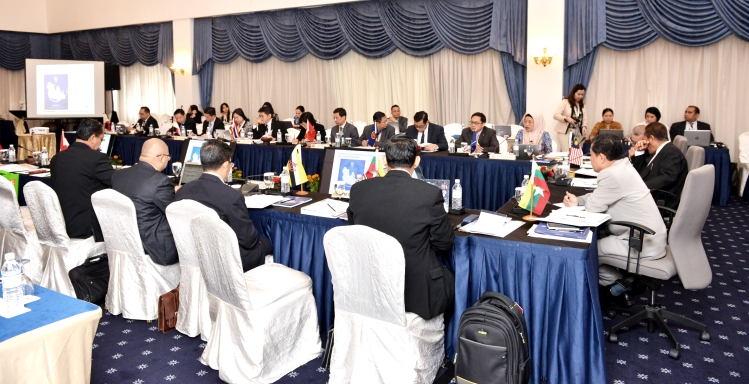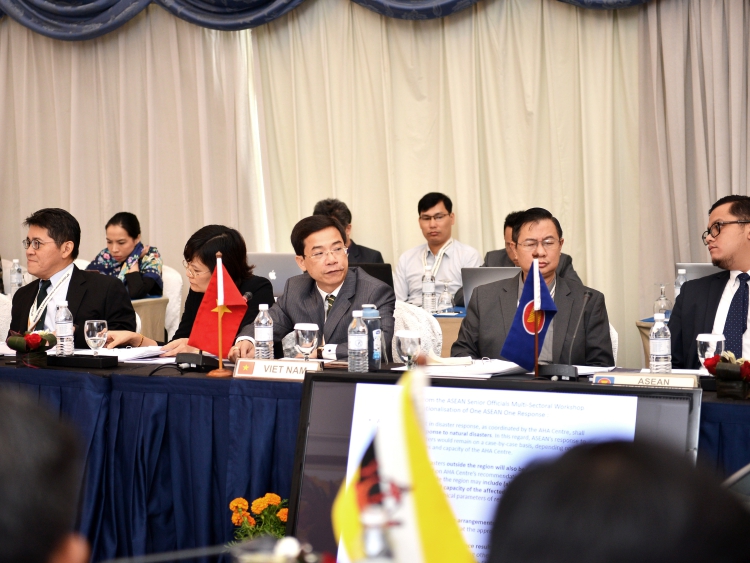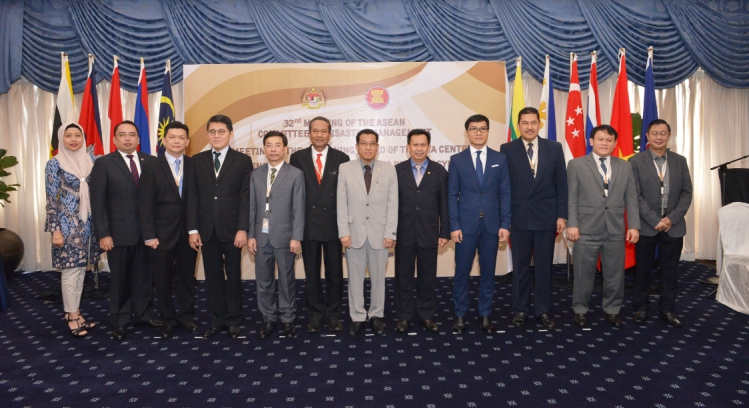Vol 40-Dr.Puji Pujiono

DR.PUJI PUJIONO
Dr. Puji Pujiono, the Founder and Senior Adviser of the Pujiono Centre and now a businessman, is one of the ASEAN region’s most respected and renowned disaster management experts. His reputation in the humanitarian and disaster management fields is acclaimed across regions from his works with numerous United Nations agencies, the ASEAN Secretariat, and organisations such as the Indonesian Red Cross to name just a few. A social worker by training and profession, Dr. Pujiono was naturally drawn into the disaster risk management sector through his firm belief and passion in humankind’s resilience to overcome adversities and great challenges.
It was Dr. Pujiono’s work with the UN Refugee Agency in the early 2000’s that introduced him to the ASEAN structure. “It was at the conclusion of the first emergency preparedness training in Indonesia that I saw potential to sow the seed for regional cooperation in disaster management” he says. In one of the then-obscure provisions in the 1976 ASEAN Declaration on Mutual Assistance on Natural Disasters, he found content regarding Member States’ commitment to assist other Member States that are in distress. Dr. Pujiono tells us that during a session of the ASEAN Experts Group Meeting on Disaster Management, he put forward three hard-to-resist proposals. “The resources to meet every six months instead of every two years, my own expertise to support the group, and my own professional networking to connect ASEAN with the rest of the world of disaster management….and they jumped at it”, he recalls.
Within the 18 months following that meeting, the infrastructure for ASEAN regional cooperation was instituted, that included the first ASEAN Ministerial Meeting on Disaster Management, a full-fledged ASEAN Committee on Disaster Management (ACDM), ASEAN Regional Programme on Disaster Management (ARPDM), and a draft regional agreement. The pivotal Indian Ocean Tsunami in December 2004 and the World Conference on Disaster Risk Reduction in Hyogo, Japan, in early 2005 presented the unprecedented momentum to accelerate the draft into what is now known as the ASEAN Agreement on Disaster Management and Emergency Response (AADMER). The Agreement sparked the idea to establish the AHA Centre, and since then has seen ASEAN develop to be among the leaders of disaster risk management actors across the world.
While reminiscing about his roles in the formative years of ASEAN’s tremendous progress in disaster management, Dr. Pujiono’s greatest passion is for future efforts and opportunities. Now that disaster management has become commonplace among ASEAN governments and communities, as they move towards attaining ASEAN integration, the challenge is how to turn such high-level regional political engagement into real national and agency-level From his past work as the Head of UN Office for the Coordination of Humanitarian Affairs (UN OCHA) based in Kobe, Japan, with UNDP Headquarters in Geneva, as well as in the field and in other roles, Dr. Pujiono has witnessed the value that the AHA Centre has in developing and integrating real commitments from parties within and external to ASEAN.
“The AHA Centre provides plenty of opportunity for all parties to share and pool resources, strengths and capacities, with the ultimate goal of making ASEAN a stronger region” he says.
Alongside his new foray into the business world, Dr. Pujiono has also led the transformation of the Pujiono Centre into a regional disaster knowledge platform, while also providing technical assistance to the revision of the disaster management legislation in the Indonesian Parliament, and engaging as a businessman in the ESCAP Sustainable Business Network Task Force on Disaster and Climate Risk Reduction.
From these new vantage points, he recognises that the value of the AHA Centre as the key coordinating body of disaster management in ASEAN is not only focusing on coordinating the disaster response parties. He stands ready to help the Centre rally the wider range of stakeholders to engage across the wider spectrum of disaster management as mandated by the AADMER. This would uniquely positon the AHA Centre as the nexus of ASEAN integration in term of strengthening resilience for sustainable development; that is from risk prevention, risk reduction, response, to recovery. Dr. Pujiono also looks forward to AHA Centre’s increased engagement on a global scale.
“I see AHA Centre solidifying its unique characteristics to be truly ASEAN; a champion that is distinct from the UN, distinct from its international partners, and to be one of the world’s leaders in disaster management”.
Written by : Christella Feni, William Shea | Photo : AHA Centre, Personal archive.
- Published in The Other Side
Vol 40-The 8th Meeting of The Governing Board of The AHA Centre

THE 8th MEETING OF
THE GOVERNING BOARD OF THE AHA CENTRE
The latest series of meetings of the ASEAN Committee on Disaster Management (ACDM) and the Governing Board of the AHA Centre focused towards the continuing vision of ASEAN nations to become global leaders in disaster management. The meetings discussed a number of ongoing initiatives, as well as past achievements in disaster management, alongside the future disaster management plans for the ASEAN region.
This integral series of meetings was officially opened by Malaysia’s Deputy Prime Minister, the Honourable Dato’ Seri Dr. Wan Azizah binti Wan Ismail, who commended ASEAN on its various achievements in disaster management, while also reiterating the work that still must be done. She highlighted particular concerns regarding the plight of women during disaster situations, calling on ASEAN nations to continue efforts to mainstream gender within disaster management efforts.
Achievements highlighted by the Governing Board included the decision that the AHA Centre would provide humanitarian assistance support to the survivors of human-induced disasters. Throughout 2017, and continuing into 2018, the AHA Centre provided humanitarian assistance to displaced populations in Marawi, the Philippines and the Rakhine state, Myanmar. This evidenced the AHA Centre’s efforts to ‘go the extra mile’, as the original mandate of the AHA Centre focuses on providing assistance to victims of natural disasters. In this situation however, the AHA Centre recognised the need to be adaptable and flexible in recognition of the ever-evolving landscape and increasing complexity of disaster management in the region.
During the meeting, ASEAN nations also reaffirmed their commitment to support the operationalisation of One ASEAN One Response Declaration – signed in 2016 – that calls for an increase in speed, scale and solidarity of ASEAN collective response to major disaster within and outside the ASEAN region. The AHA Centre, as the operational engine of the ASEAN Agreement on Disaster Management and Emergency Response (AADMER), has taken a number of initiatives to further enhance the operationalisation of the Declaration, including the formulation of the ASEAN Joint Disaster Response Plan (AJDRP).
Another highlight from the meetings were the various initiatives to improve the capacity of the disaster professionals in the region through various capacity building activities, including the ASEAN Emergency Response and Assessment Team (ASEAN-ERAT) training, as well as the AHA Centre Executive (ACE) Programme. In addition to this, ASEAN is currently working to kick-start the ASEAN Standards and Certification for Experts in Disaster Management (ASCEND). Through this programme, ASEAN aims to set common standards and qualifications for disaster management professionals, as well as develop a standard training curriculum. By agreeing on common standards, ASEAN will ensure the availability of qualified disaster management professionals in the region, further supporting the vision of ASEAN becoming a global leader in disaster management.
On the side-lines of the event, the Governing Board also witnessed the signing of three Memoranda of Intent (MoI) between the AHA Centre and key strategic partners – namely MERCY Malaysia, RedR Australia and MapAction.
These MoI signings signify the commitment between AHA Centre and the partners to further strengthen, compliment and support each other in areas of mutual interest on disaster management. Several areas covered under the MoIs include knowledge exchange and management, innovation and joint fundraising efforts, disaster monitoring and analysis, and recovery.
All of these were discussed during the 32nd Meeting of the ACDM and other related meetings that took place from the 26th to the 28th of June 2018, in Kuala Lumpur, Malaysia. This also included the 8th Meeting of the Governing Board of the AHA Centre on the 27th of June, the 9th Meeting of the Joint Task Force to Promote Synergy Other Relevant ASEAN Bodies on Humanitarian Assistance and Disaster Relief (HADR), and the 5th ASEAN Agreement on Disaster Management and Emergency Response (AADMER) Partnership Conference. During this event, the AHA Centre also presented its 2017 Annual Report, which documents the progress, achievements, and plans for further enhancement of the roles and responsibility of the AHA Centre.
Written by: Carla Budiarto, Dipo Summa | Photo: AHA Centre
- Published in Highlight


